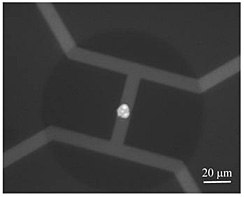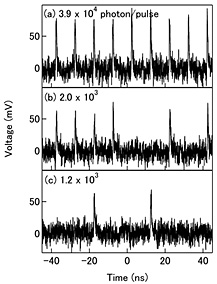Optical Science Laboratory
Quantum cryptography is the ideal way to achieve secure communications, since the security is guaranteed by the physical principle of quantum mechanics. To realize a quantum cryptography network, it is necessary to strongly increase the communications distance and speed, which are limited by the performance of conventional single photon detectors. Recently, a new type of single photon detector that uses NbN superconducting nanowire (SSPD) has been developed. In quantum key distribution (QKD) experiments, NbN-SSPD has substantially outperformed conventional semiconducting single photon detectors [1]. Here, we are investigating single photon detection using MgB2 superconductor. Since Tc of MgB2 is 40 K, which is much higher than the 16 K of NbN, a MgB2-SSPD would have a higher operating temperature. Moreover, the short electron-phonon
relaxation time of MgB2 means that the MgB2-SSPD would operate faster than a NbN-SSPD.
To fabricate the MgB2-SSPD, it is necessary to develop a technique for MgB2 utlta-thin film growth and to develop a MgB2 nano-fabrication process. We use the molecular-beam epitaxy (MBE) for the ultra-thin film growth, and have obtained the 10-nm-thick MgB2 film with Tc of 20 K. For nano-fabrication of NbN, reactive ion etching (RIE) with fluorine-based gas has been established, but no etching gas has been reported for MgB2. We have developed a new lift-off process using a Si/C bilayer mask, which
can withstand the high temperatures needed for MgB2 deposition. Using the method, we have fabricated a MgB2 nanowire with a width of 200 nm. Figure 1 shows the MgB2 nanowire, which is illuminated by a laser pulse from an optical fiber.
When the nanowire is biased by a dc current source, electrical signals
with a repetition frequency of 100 MHz appear, corresponding to the laser
pulse [Fig. 2(a)]. The signals become intermittent as the intensity of
the laser pulse strongly decreases [Fig. 2(b), (c)], indicating that the
MgB2 nanowire works in the photon detection regime [2].
[1] H. Takesue et al., Nature Photon. 1 (2007) 343.
[2] H. Shibata et al., IEEE Trans. Appl. Supercond. 19 (in press).
 |
 |
|||||
|
|